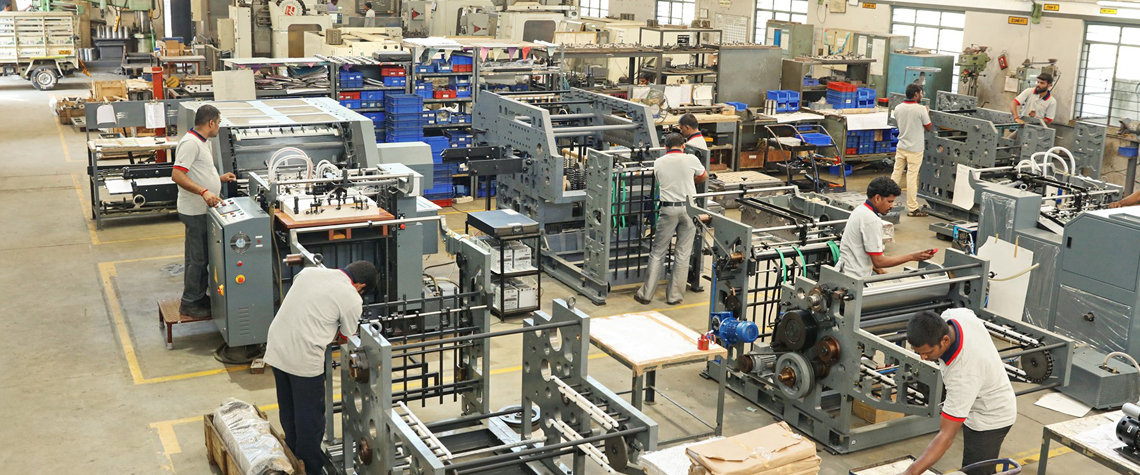
14-09-2020 | Autoprint
Definition of Maintenance
According to the British Standard Glossary of terms (3811:1993) maintenance is defined as “The combination of all technical and administrative actions, including supervision actions, intended to retain an item in, or restore it to, a state in which it can perform a required function” or “Maintenance is a set of organised activities that are carried out in order to keep an item in its best operational condition with minimum cost acquired”
.Maintenance Activities
Activities of maintenance function could be either repair or replacement activities, which are necessary for an item to reach its acceptable productivity condition and these activities, should be carried out with a minimum possible cost.
History of Maintenance
- In the period of pre-World War II, maintenance at that era was restricted to fixing the unit when it breaks because it was the cheapest alternative.
- During and after World War II, People in this era classified maintenance as a function of the production system
- At present, due to the increased awareness World-class companies are in continuous need of a very well organised maintenance programme to compete world-wide.
Objectives of Maintenance
- Maximising production or increasing facilities availability at the lowest cost and at the highest quality and safety standards.
- Reducing breakdowns and emergency shutdowns.
- Optimising resources utilisation.
- Reducing downtime.
- Improving spares stock control.
- Improving equipment efficiency and reducing scrap rate.
- Minimising energy usage.
- Optimising the useful life of equipment.
- Providing reliable cost and budgetary control.
- Identifying and implementing cost reductions.
Types of Maintenance
1. Run to Failure Maintenance (RTF)
The required repair, replacement, or restore action performed on a machine or a facility after the occurrence of a failure in order to bring this machine or facility to at least its minimum acceptable condition. It is the oldest type of maintenance.
Types of Run to Failure Maintenance
- Emergency maintenance : it is carried out as fast as possible in order to bring a failed machine or facility to a safe and operationally efficient condition.
- Breakdown maintenance : it is performed after the occurrence of an advanced considered failure for which advanced provision has been made in the form of repair method, spares, materials, labour and equipment.
2. Preventive Maintenance (PM)
British Standard 3811:1993 Glossary of terms defined preventive maintenance as: the maintenance carried out at predetermined intervals or according to prescribed criteria and intended to reduce the probability of failure or the degradation of the functioning and the effects limited.
Types of preventive maintenance
- Routine maintenance: which includes those maintenance activities that are repetitive and periodic in nature such as lubrication, cleaning, and small adjustment.
- Running maintenance: which includes those maintenance activities that are carried out while the machine or equipment is running
- Opportunity maintenance: which is a set of maintenance activities that are performed on a machine or a facility when an unplanned opportunity exists during the period of performing planned maintenance activities to other machines or facilities.
- Window maintenance: which is a set of activities that are carried out when a machine or equipment is not required for a definite period of time.
- Shutdown preventive maintenance: which is a set of preventive maintenance activities that are carried out when the production line is in a total stoppage situation.
3. Corrective Maintenance
The way to perform corrective maintenance activities is by conducting four important steps:
- Fault detection.
- Fault isolation.
- Fault elimination.
- Verification of fault elimination.
Prerequisites of corrective maintenance
- Accurate identification of incipient problems.
- Effective planning which depends on the skills of the planners, the availability of well developed maintenance database about standard time to repair, a complete repair procedures, and the required labour skills, specific tools, parts and equipment.
- Proper repair procedures.
- Adequate time to repair.
- Verification of repair.
Types of corrective maintenance
- Remedial maintenance, which is a set of activities that are performed to eliminate the source of failure without interrupting the continuity of the production process.
- Deferred maintenance, which is a set of corrective maintenance activities that are not immediately initiated after the occurrence of a failure but are delayed in such a way that will not affect the production process.
- Shutdown corrective maintenance, which is a set of corrective maintenance activities that are performed when the production line is in a total stoppage situation.
4. Improvement Maintenance (IM)
It aims at reducing or eliminating entirely the need for maintenance.
This type of maintenance is subdivided into three types as follows:
- Design-out maintenance which is a set of activities that are used to eliminate the cause of maintenance, simplify maintenance tasks, or raise machine performance from the maintenance point of view by redesigning those machines and facilities which are vulnerable to frequent occurrence of failure and their long term repair or replacement cost is very expensive.
- Engineering services which includes construction and construction modification, removal and installation, and rearrangement of facilities.
- Shutdown improvement maintenance, which is a set of improvement maintenance activities that are performed while the production line is in a complete stoppage situation.
5. Predictive Maintenance (PDM)
Predictive maintenance is a set of activities that detect changes in the physical condition of equipment (signs of failure) in order to carry out the appropriate maintenance work for maximising the service life of equipment without increasing the risk of failure.
Types of predictive maintenance
- Condition-based predictive maintenance depends on continuous or periodic condition monitoring equipment to detect the signs of failure.
- Statistical-based predictive maintenance depends on statistical data from the meticulous recording of the stoppages of the in-plant items and components in order to develop models for predicting failures.